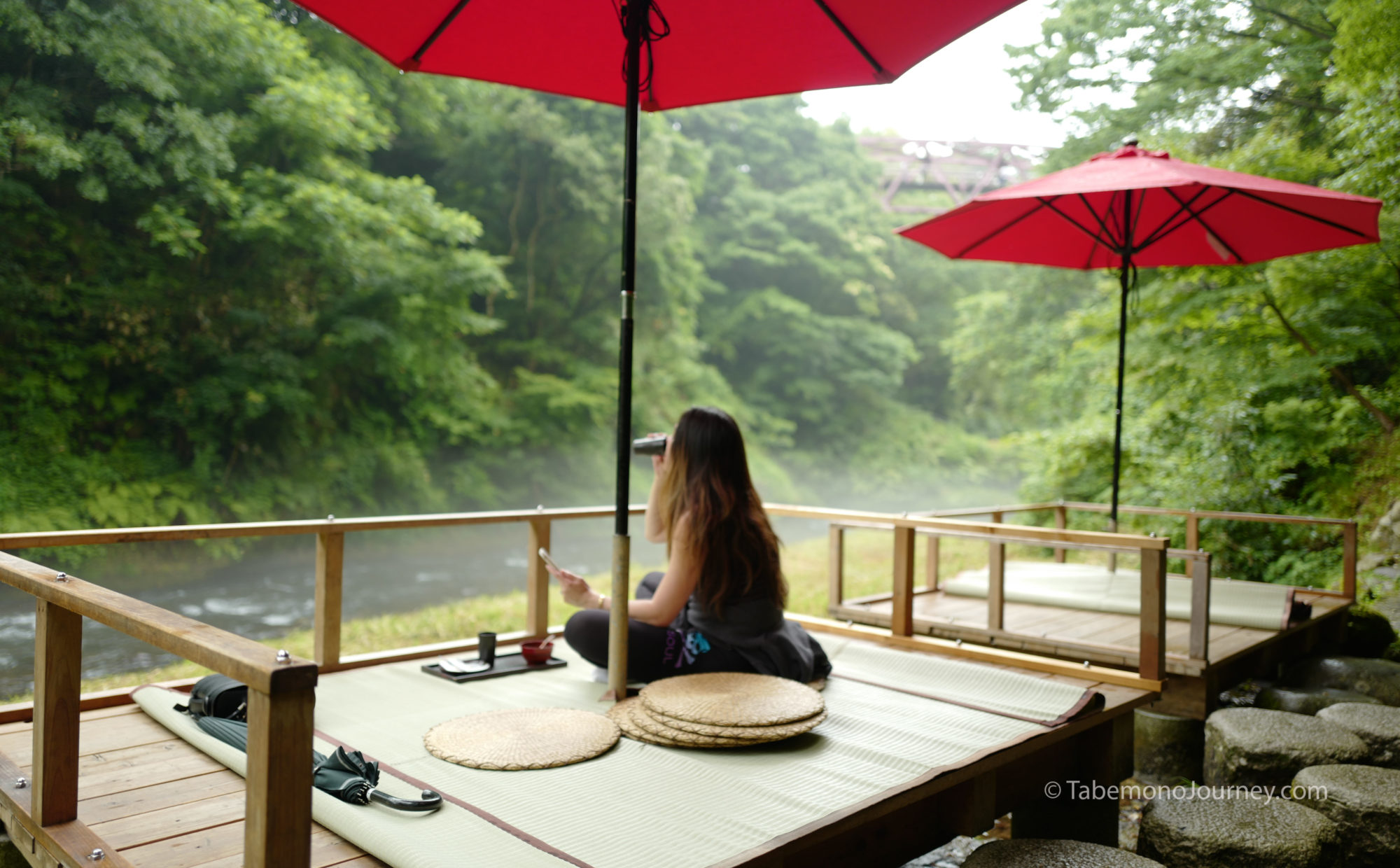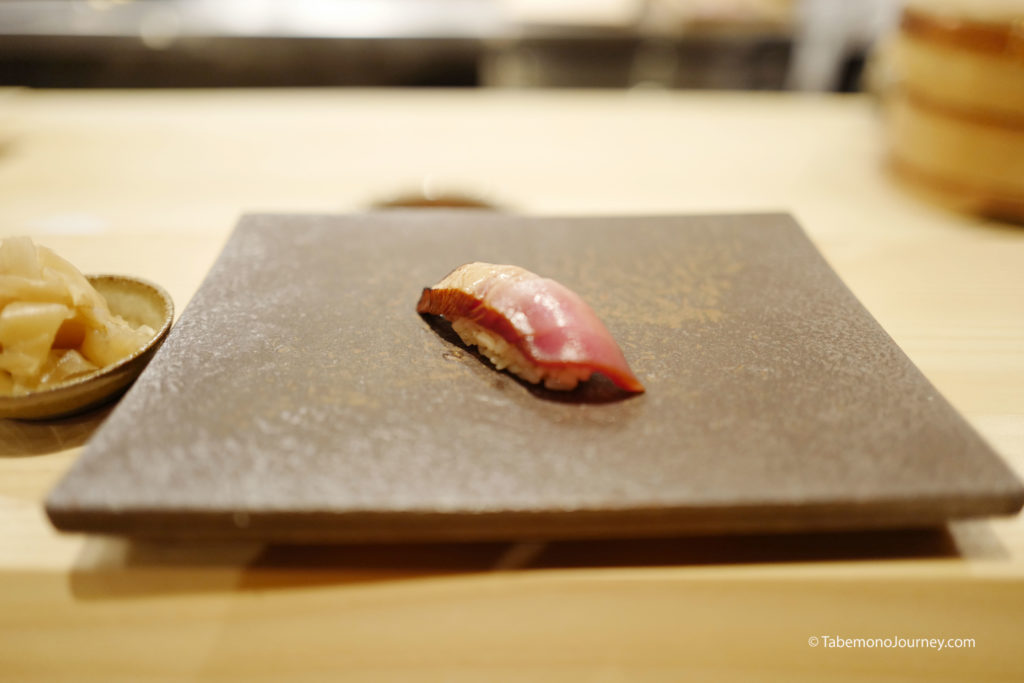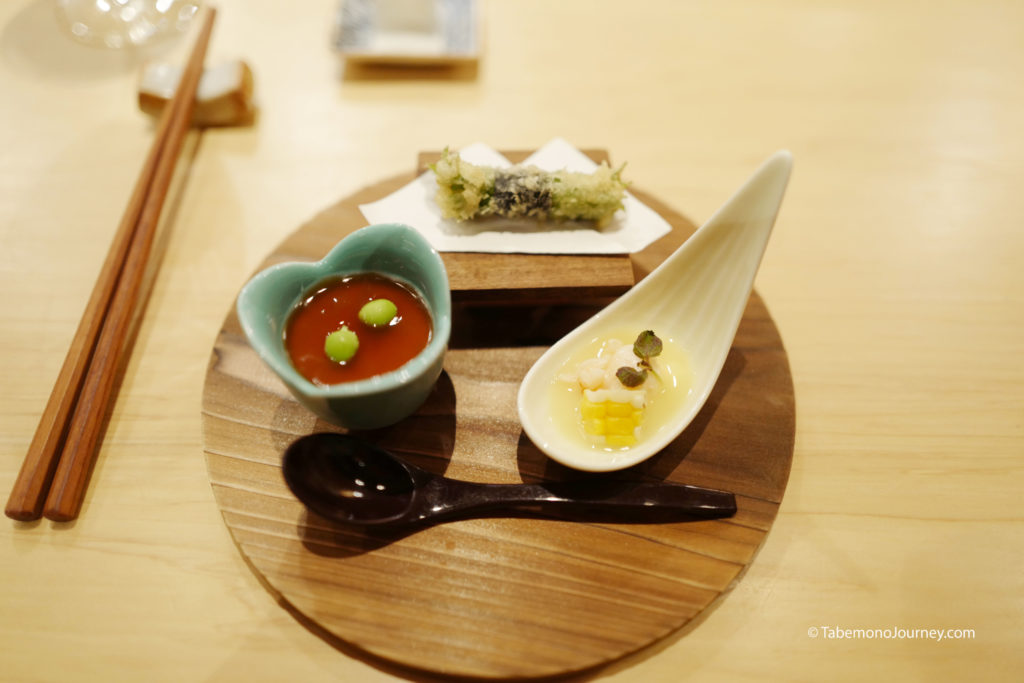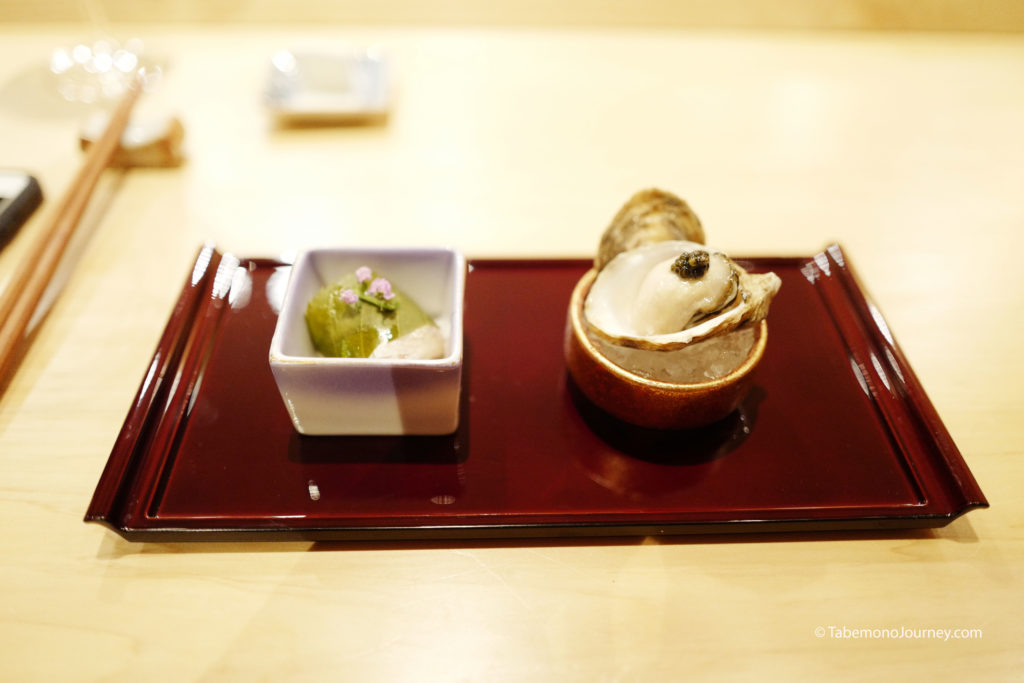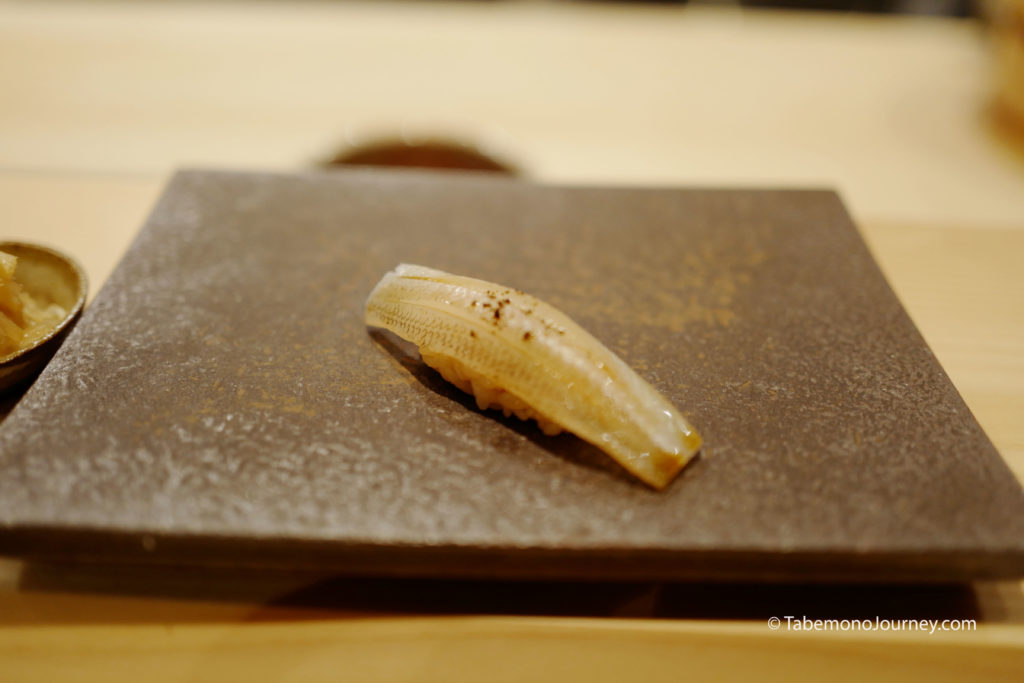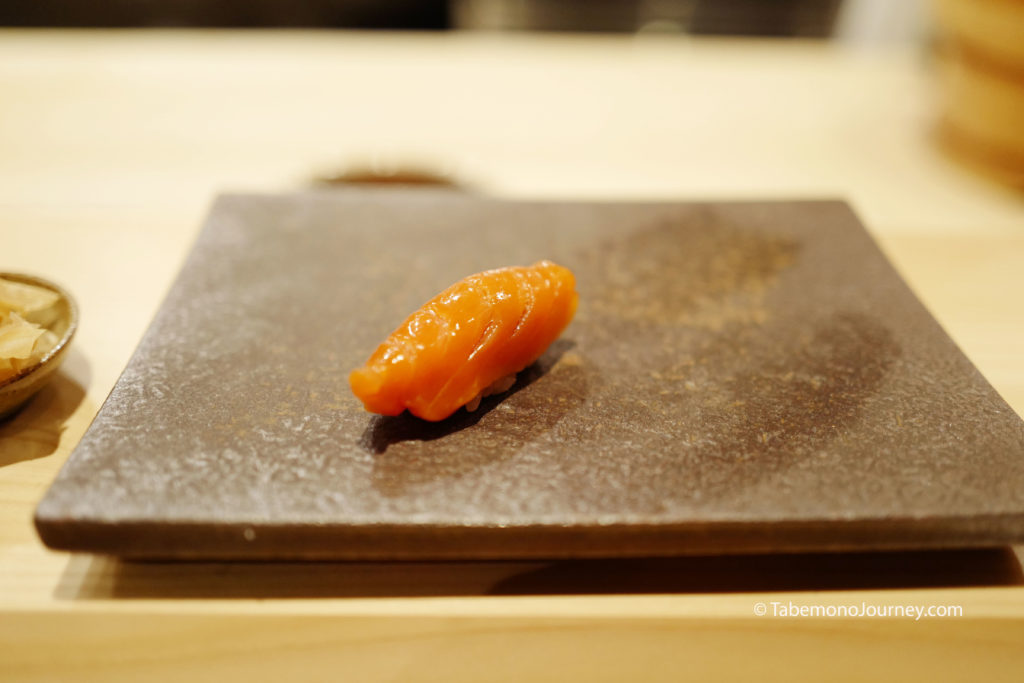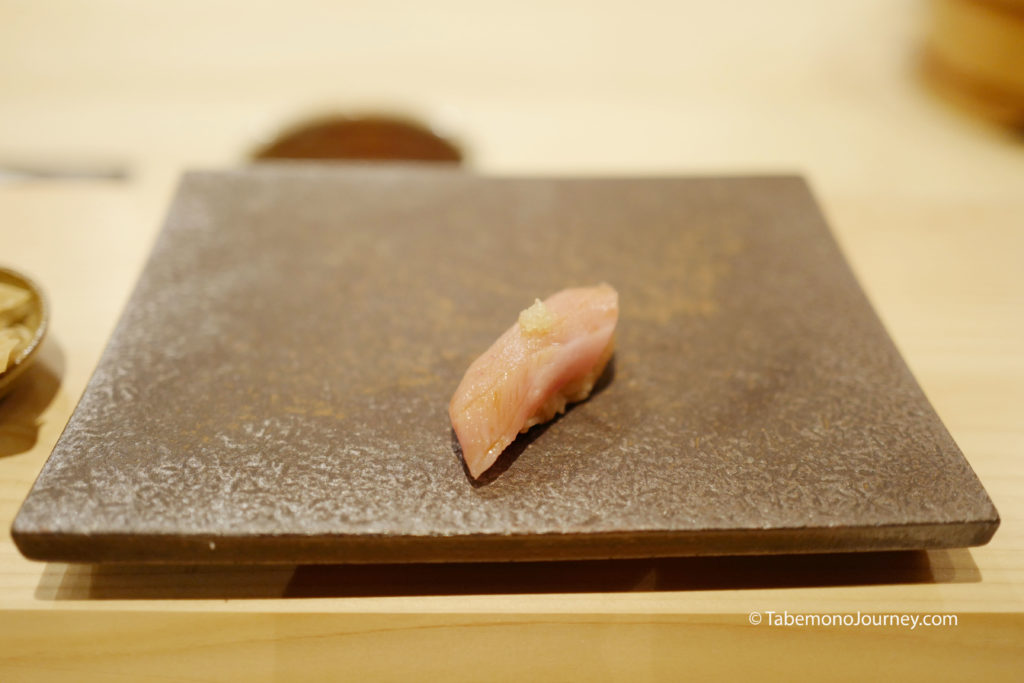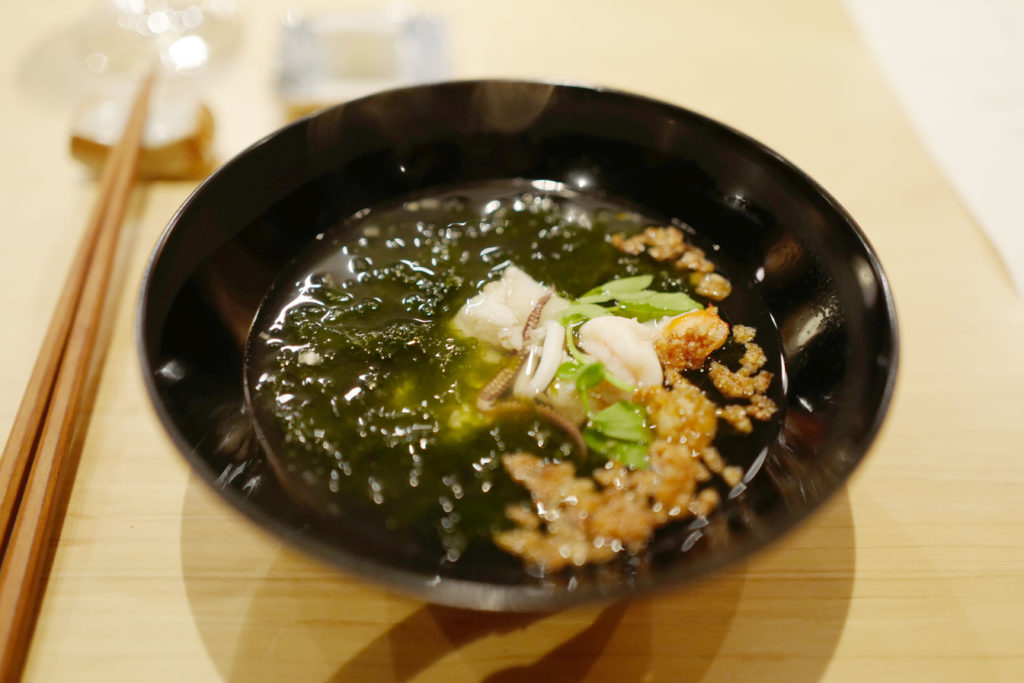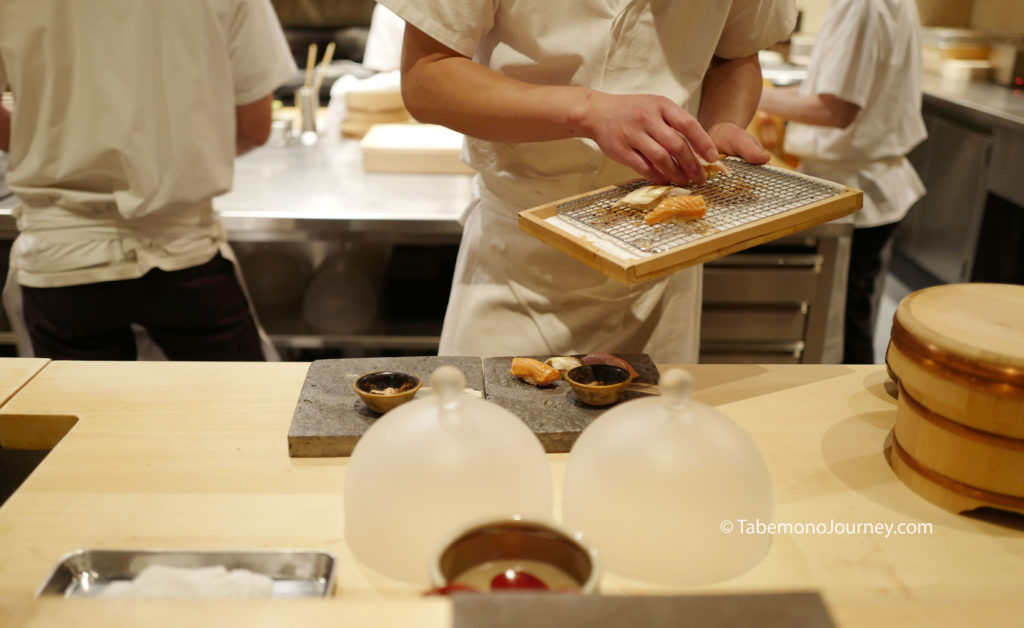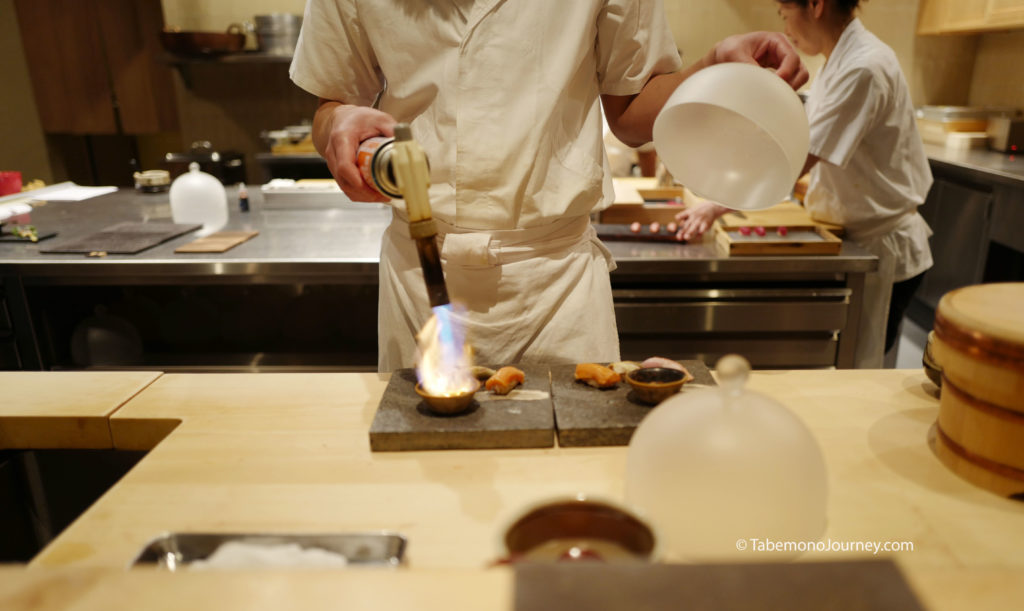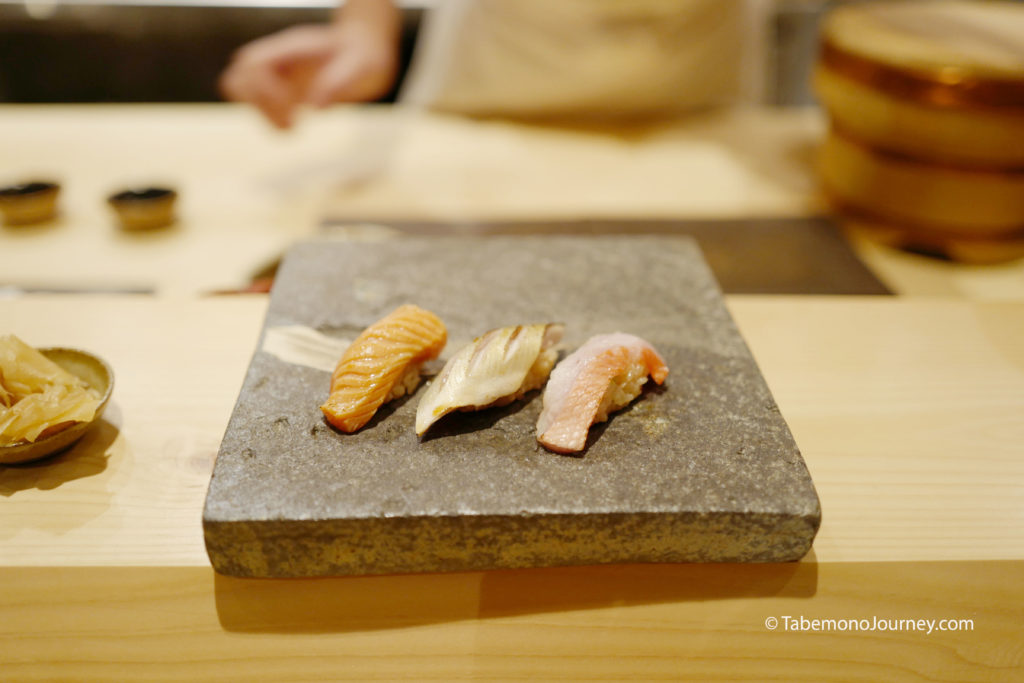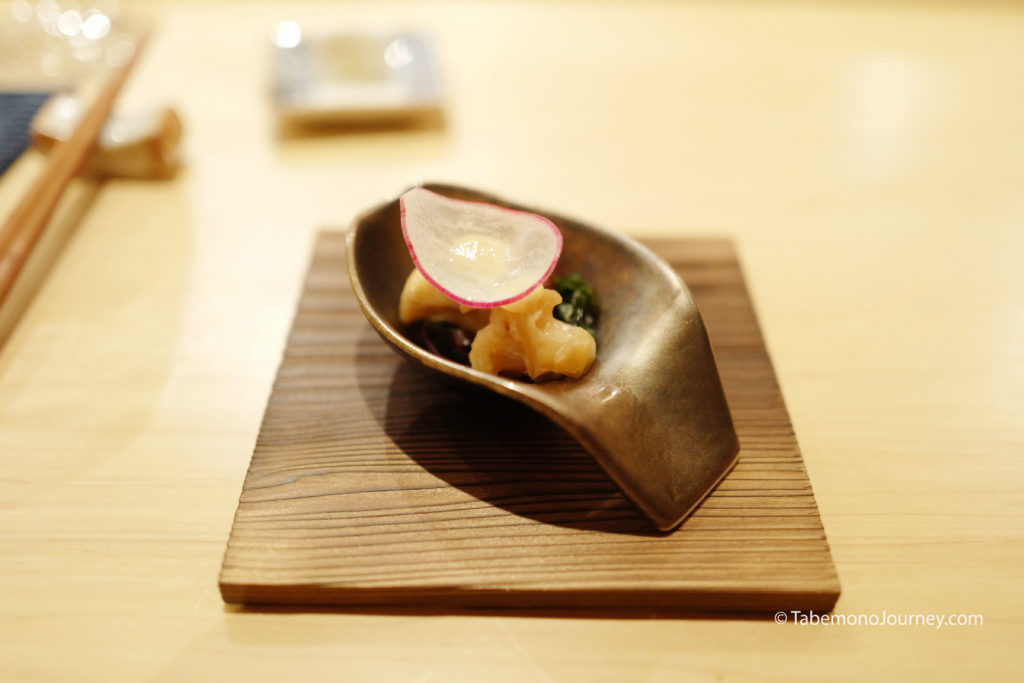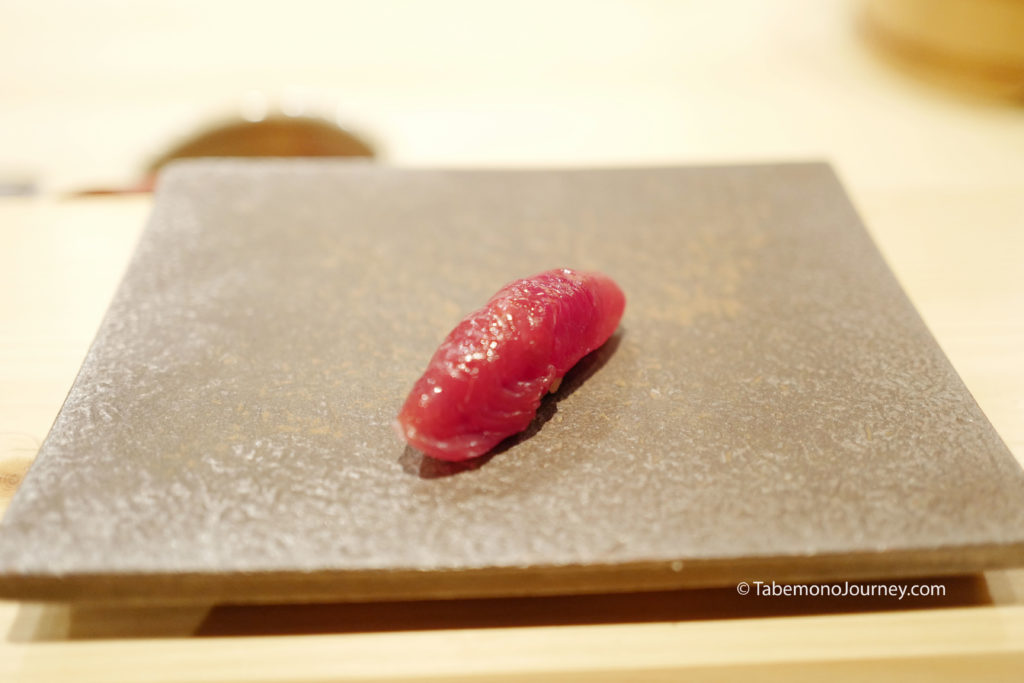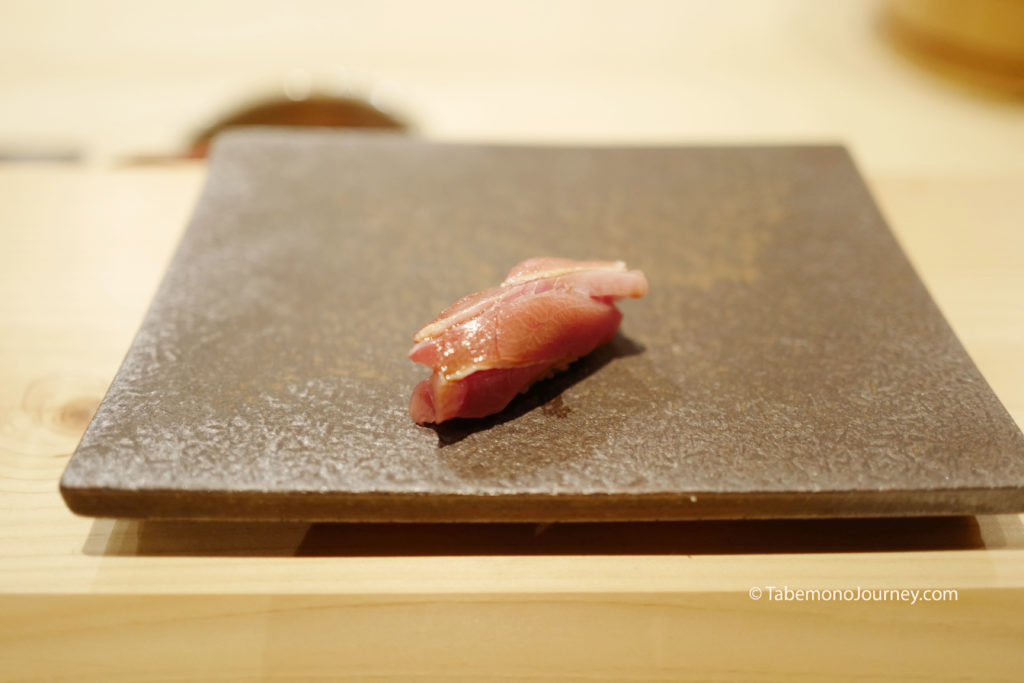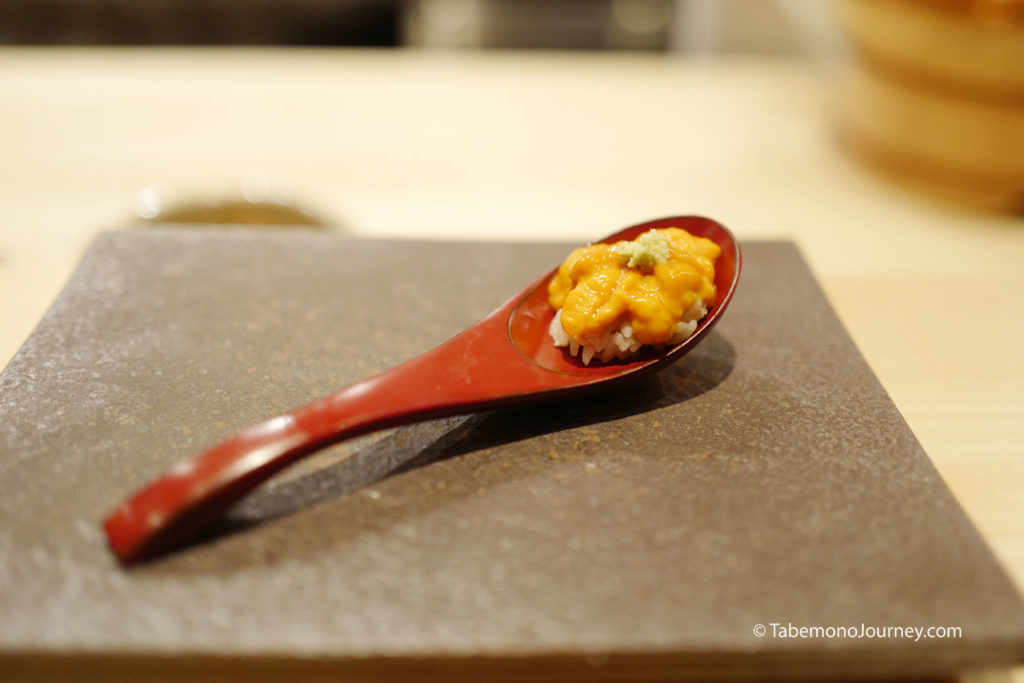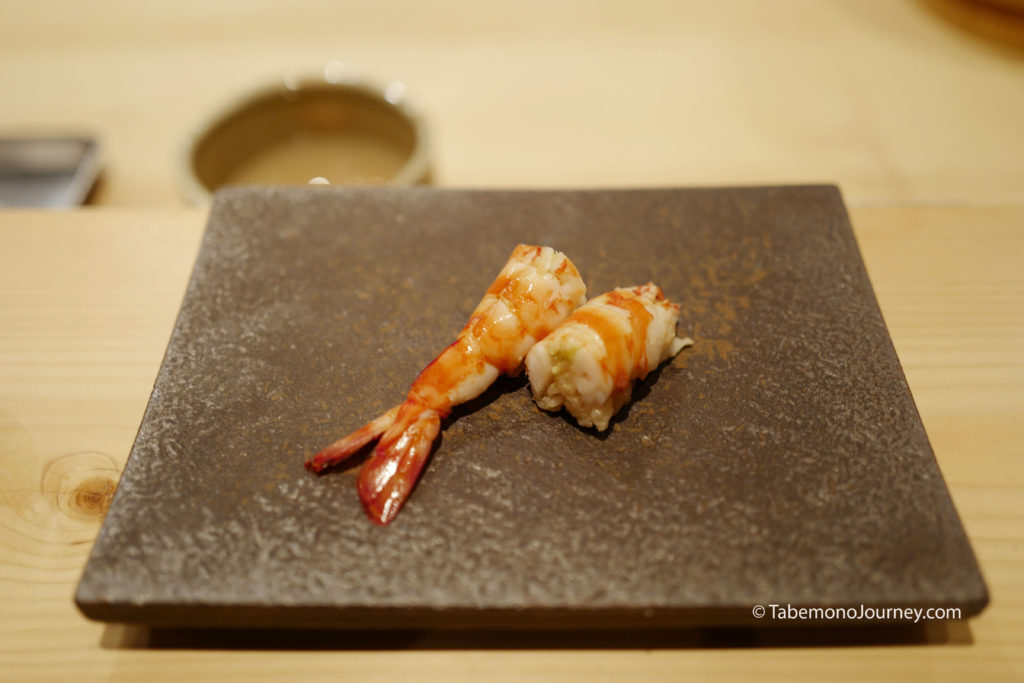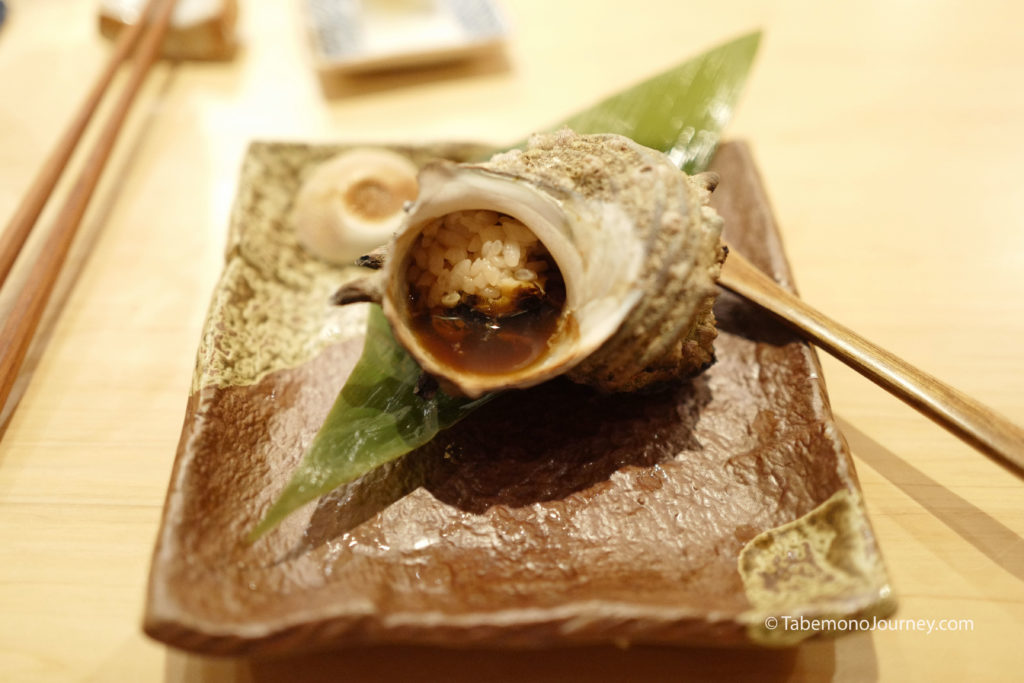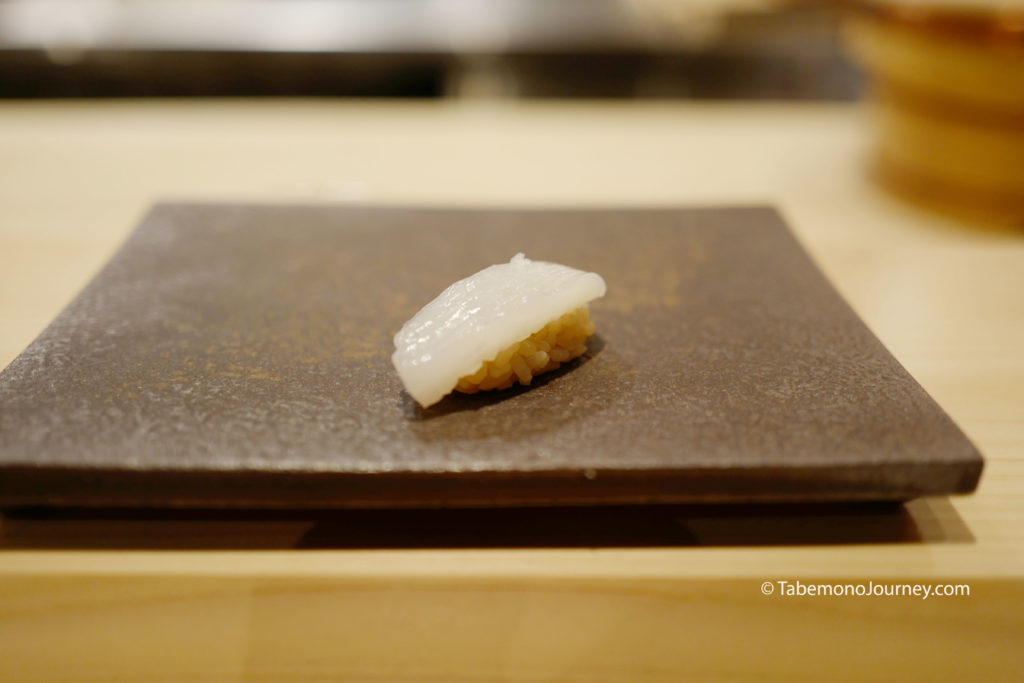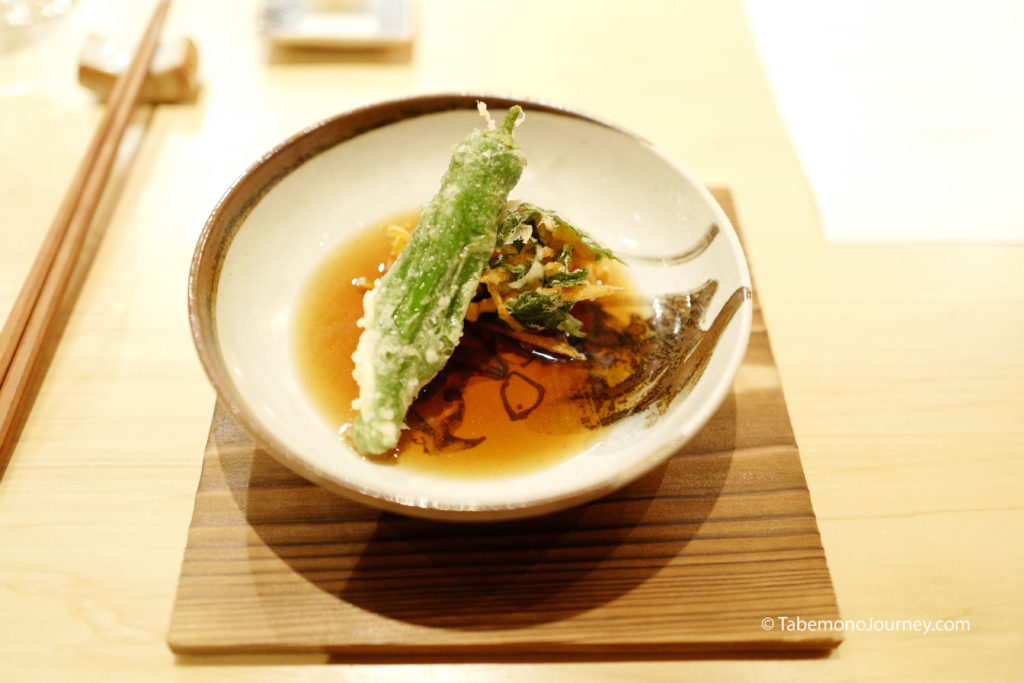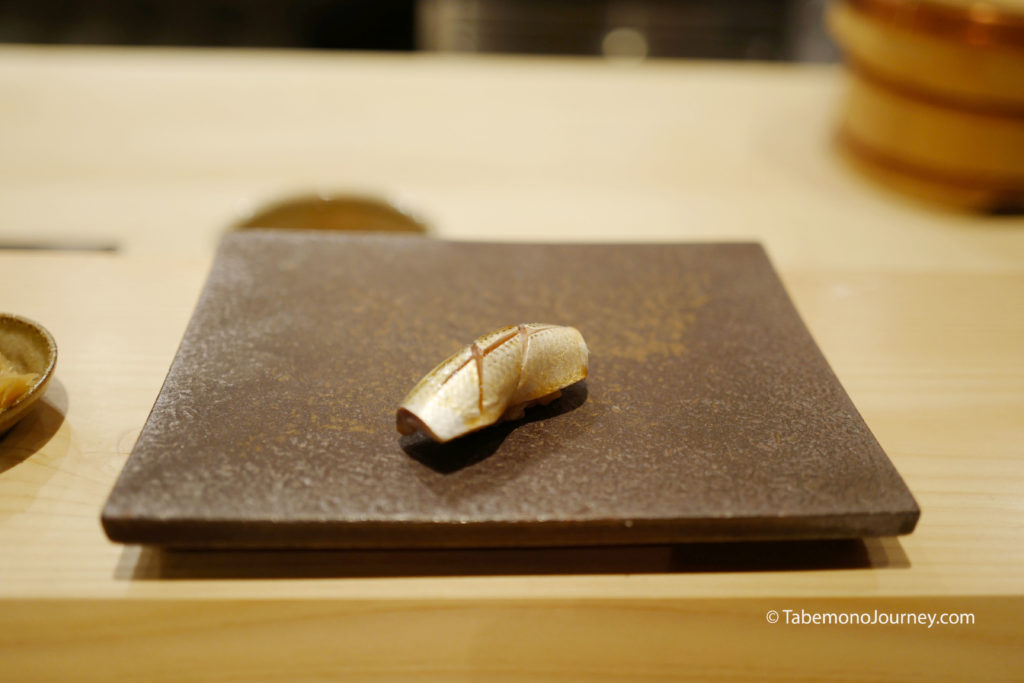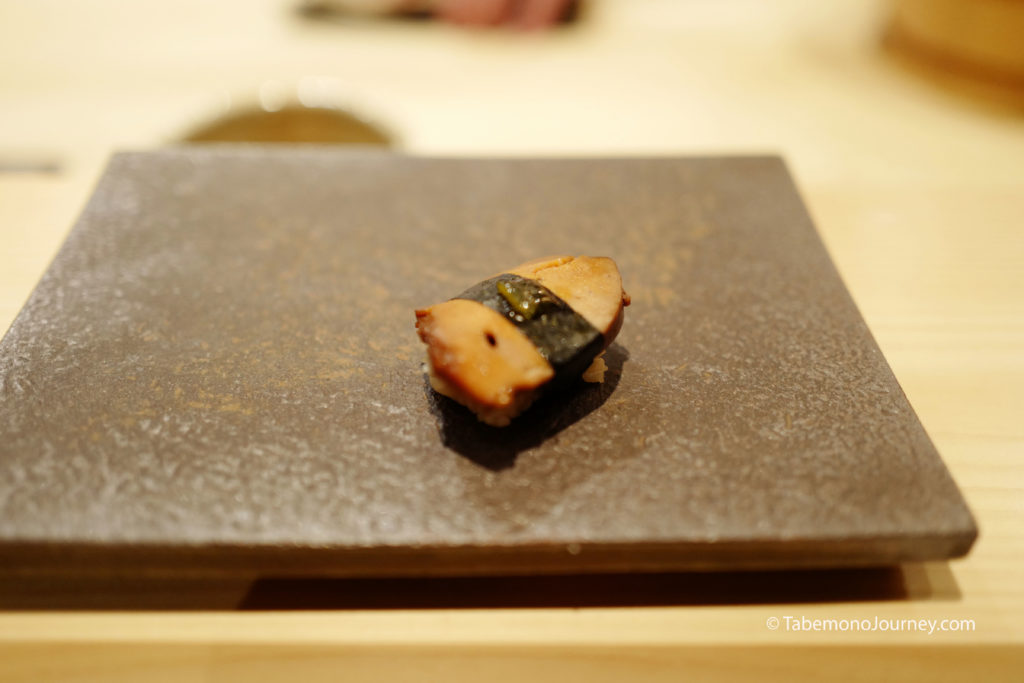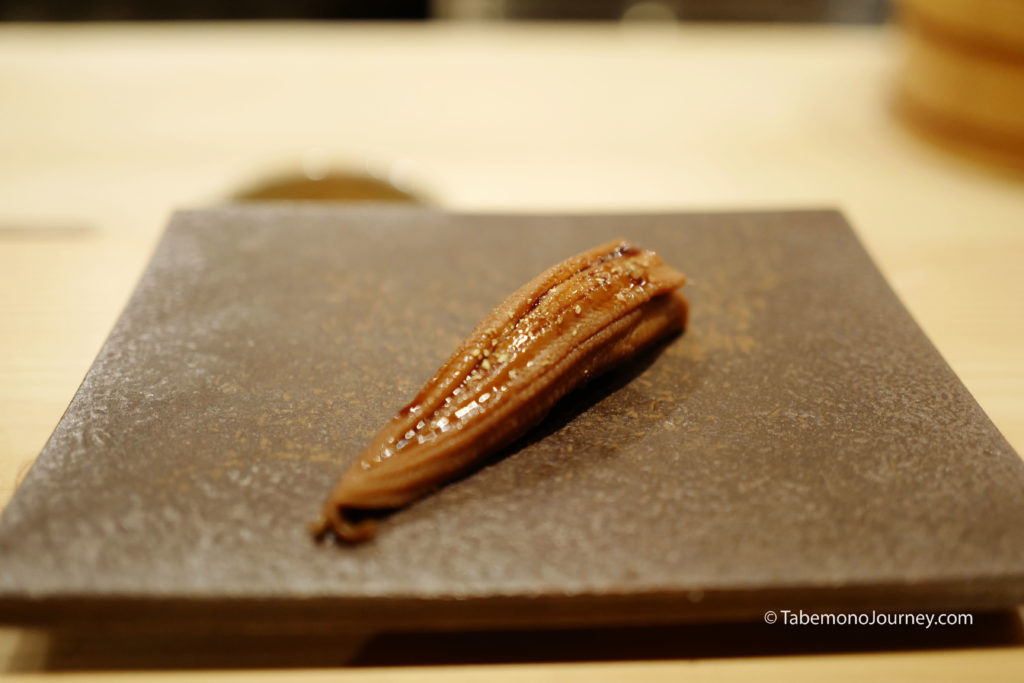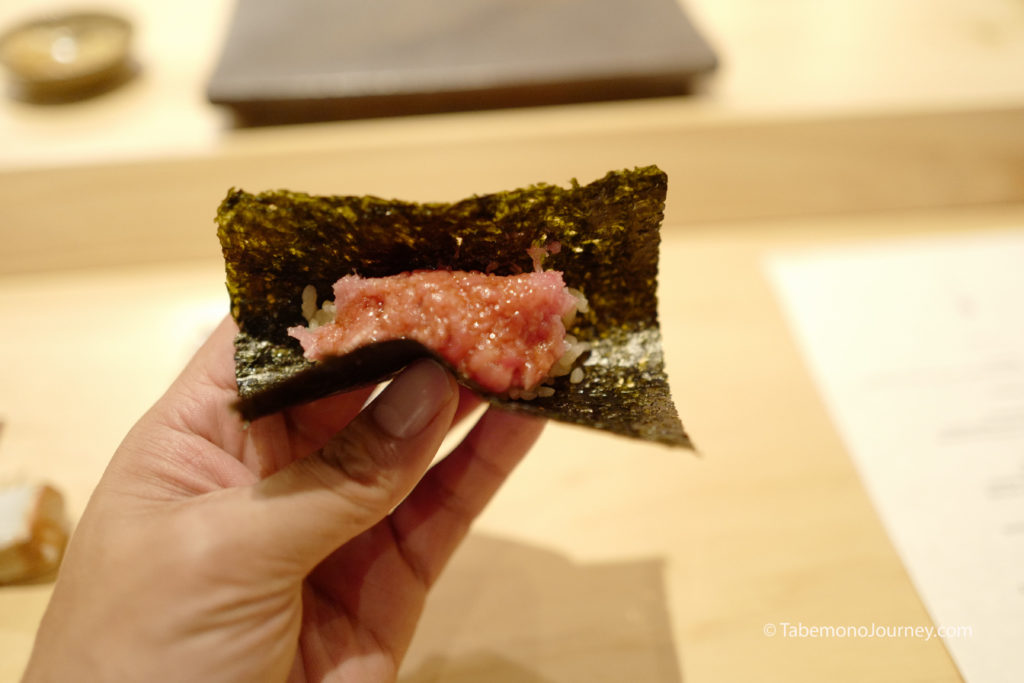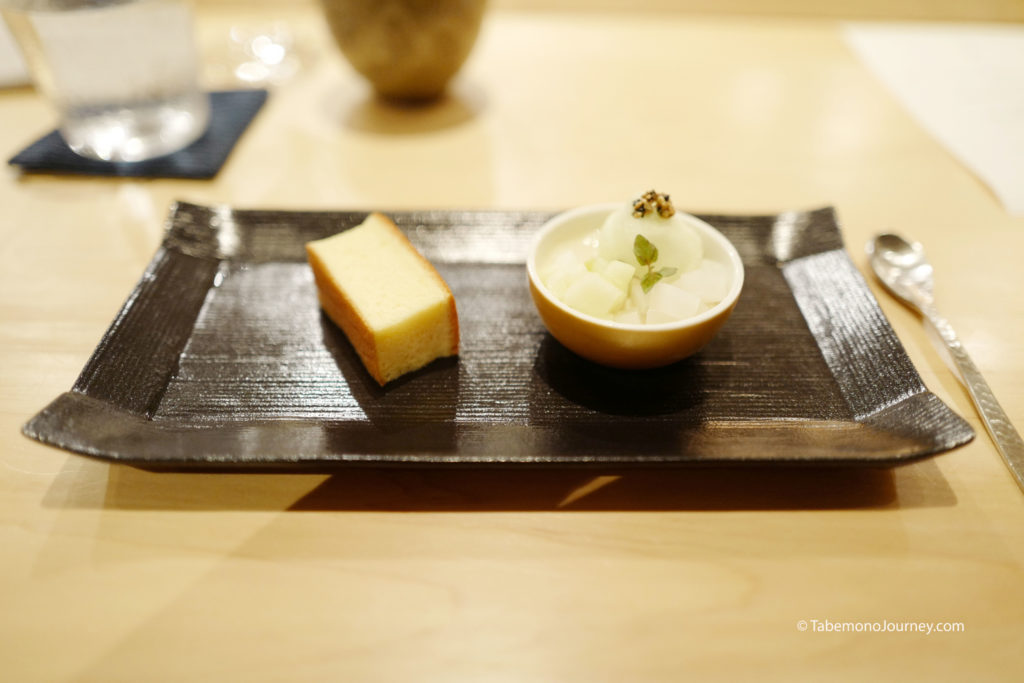Sunday, August 6, 2017
One of the tough parts of wanting to eat omakase at really good sushi places in San Francisco is that you can not go at the last minute. Really good places need to be booked days, or even weeks in advance. Additionally, a couple of my favorite spots, like Sasaki Sushi, are not even open on Sundays. This was the case for us on this particular Sunday, when we were craving good sushi at the last moment. However, the last time we went to one spontaneously, we had a disappointing experience at the newly opened Robin (good fish selection but lacks fundamentals), as such we were hesitant to try another new restaurant. However, I had Kinjo on my list of eats since it opened in the beginning of the year. Since nothing else was available, I checked “Opentable” and noticed they had a lot of time slots available. I called the restaurant to make sure we could get bar-counter seating, as that is a must have when eating omakase-style sushi. They confirmed that their 6:30pm and 8:30pm slots were open for the bar counter, and thus started our night of what was of lower expectations. However, this turned out to easily be one of my top 5 sushi recommendations in the not just San Francisco, but all of the Bay Area, California.
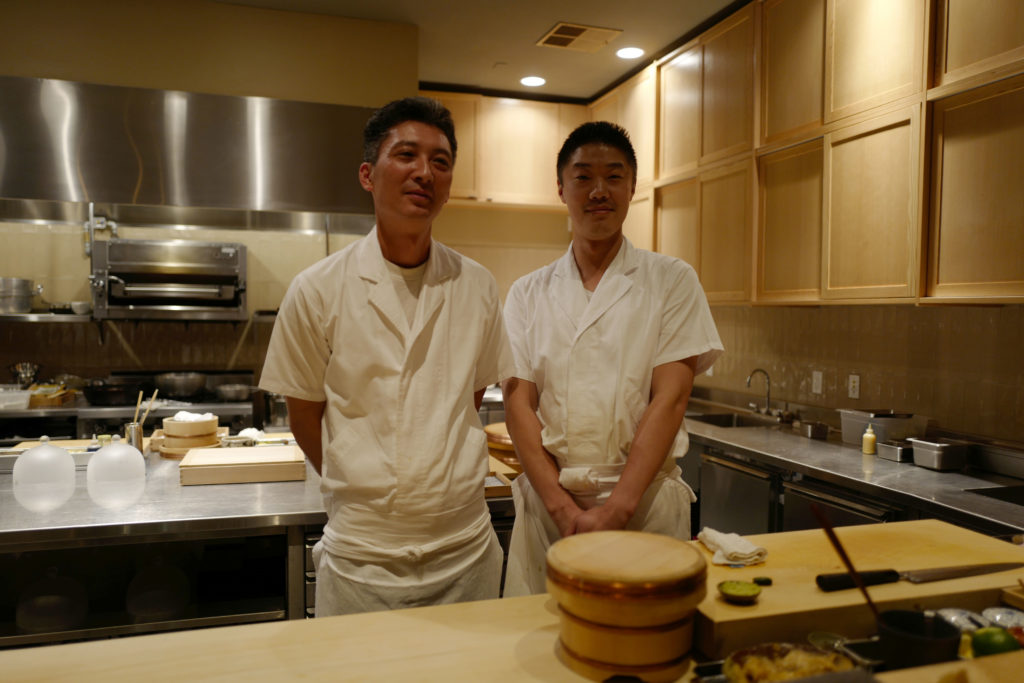
Kinjo is headed by Takatoshi Toshi, who worked and helped Sushi Ran earn a Michelin star in the past. He is partnering with the owners of the Saru/Ijji team to open Kinjo. While it is not a traditional edomae-style sushi like Sasaki Sushi and Sushi Yoshizumi, they merge techniques from edomae sushi with more contemporary techniques. Techniques like aging and curing could be seen to be combined with wood smoking. His flow of courses also took elements of kaiseki as we had appetizer and soup courses between nigiri. Takatoshi did not serve us that night, but he oversaw all aspects of the kitchen that night, from watching the nigiri preparation from our young itamae, Chef Shin, to making sure the tempura and soup courses were done to his precise and high standards.
While I still prefer pure edomae omakase like the restaurants in Ginza, Tokyo and Sasaki Sushi, my wife and I were very happy with our dining experience at Kinjo. Here is what we had that night:
Zuke Chu-toro is marinated medium fatty tuna from Australia. Typical zuke usually uses soy sauce to cure the tune, but here, it was red-wine cured and then seared. Glutamates from the red wine blended with the umami from the chi-toro, creating a new and exciting taste profile. It was a brilliant and delicious start of our night.
This was what was called the otoshi amuse on the menu. This is pretty much an appetizer course, and reminded me of the Hassun course in kaiseki.
On the lower left we have house made tofu with umami sauce (a dashi and soy reduction) topped with sugar peas. Soft and delicate, it paired wonderfully with the smokey and flavorful sauce.
The top portion consists of a tempura shiso left wrapped around geso (squid legs). Ume (plum) flavored the squid legs and provided a nice acidic and tangy contrast to the tempura.
On the lower right is a spoon of perfectly poached lobster with corn puree and a touch of yuzu. Very refreshing and helped cleanse the palate.
Next up was the sakizuke course, which in kaiseki, is the small appetizer.
On the right we have a bamboo leaf cured Kasugodai (baby snapper) from Ehime, Japan. It was wrapped around a grape leaf and lightly poached.
On the left, we have kusshi oyster from British Columbia, topped with caviar and seasoned with yuzu in a small bed of sushi rice enveloped its shell. It was bright, and briny.
The next four courses were the seasonal nigiri. First off was the kisu, which is a whiting and was from Mie, Japan. It had a sweet taste, as it was slightly cured in Kombu, which is a traditional preparation called kombujime.
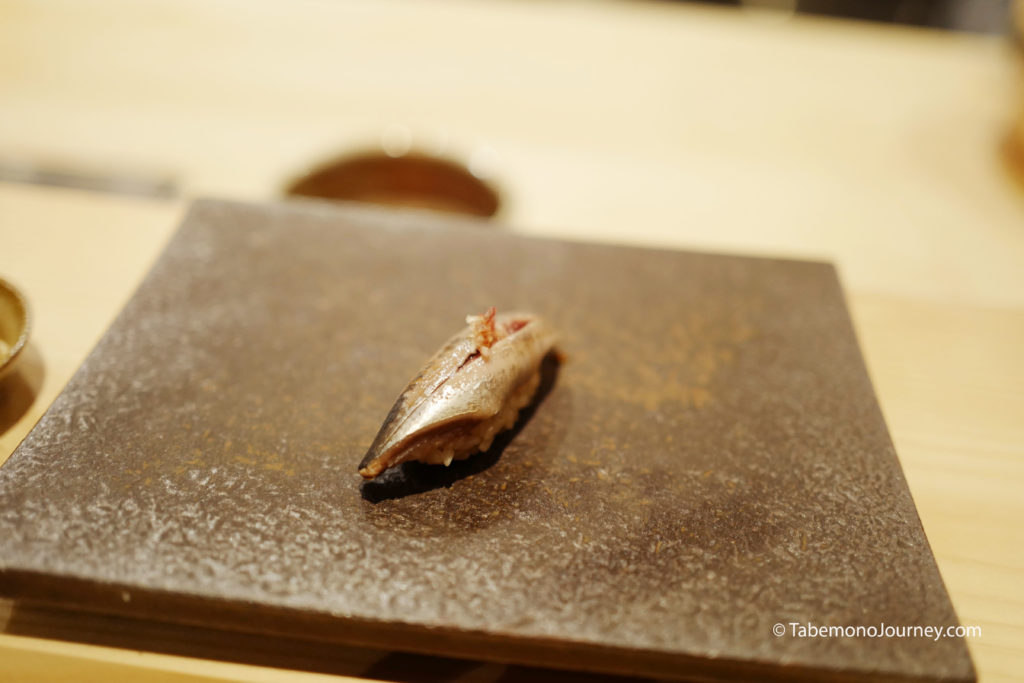
Iwashi (sardine) from Chiba, Japan.
It was so fatty from the fish oils and fresh, so it did not need a whole lot to enhance it, just a little house tare and topped with a little myoga (ginger blossom). Simply melted in my mouth and had that distinctive taste of hikarimono (silver skin fish) that’s packed full of umami.
Copper river sake (salmon) from Alaska. I usually don’t like salmon nigiri, as it has a muddy and metallic taste to me. But, this was aged several days to concentrate the umami and to also remove that muddy taste I don’t like. It was very buttery and melted in our mouth.
Bincho maguro, wild albacore tuna, from Fort Bragg, California.
Aged for a couple of days, the texture was soft and silky. It was topped with fingering lime which adds a hint of acidic taste and texture that popped in your mouth as the citrus pulps burst in your mouth.
Owan soup course was next. It is kaisen (seafood) soup in a bonito broth. Flounder, squid, and scallop from the west coast was mixed with seaweed and was topped with pea spout and toasted rice.
Our next dish was prepared right in front of us. After cutting the tane and molding it to the rice, Chef Shin used the blow torch to sear the three pieces of fish. He then plated them in the slate next to a dish with cherry wood chips.
He then brought out the blow torch and fired up the chips so that they smoked. Then, he used the dome lids to cover the nigiri pieces with the smoking wood chips.
The final product was the trio of our next course, the cold cherrywood nigiri set. It was definitely not traditional edomae, but a blend of old and new techniques. Keep in mind that not only was the fish smoked but the sushi rice as well, further enhancing the taste of each fish.
On the right is kinmedai, which is golden eye sea bream from Chiba, Japan. The kinmedai was aged a couple of days, and the searing and smoking added a new taste.
In the middle is ayu, which is known as “sweet fish,” from Aichi, Japan. A wonderful fish that is caught in the fresh water, and normally grilled and eaten whole. The smoking and searing worked really well with this beautiful fish.
On the left is white soy cured Copper River sake (salmon). Cured smoke salmon? No need to say more as it simply is a classic combo, but reimagined in a new format.
Another otoshi amuse course, this time with a purpose to cleanse the palate from the smoked courses. It was cauliflower braised in a soy dashi, and paired with yuzu dressed seaweed, which helped to reset our taste buds for the next courses.
Akami, the red meat from the Australian blue-fin tuna. One thing to note is that while it is summer for us in the West Coast, it is winter in Australia. This means that the tuna is fattier in the colder waters and hence has a nicer, oilier taste than the ones caught in the pacific waters during this time around. Aged for a week, the flavors were concentrated and were amazing.
Otoro is the fatty cut form the blue-fin tuna. This one was caught off the coast of Ireland and aged for a little over a week. The cut deliberately had a bit of sinew as the aging helped to break down the fibers and further provided a vehicle to deliver umami as you chew. Added a little bit of texture and was amazing.
Next up was Ensui uni, which is Hokkaido bafun uni (sea urchin). After being cracked and cleaned, it was placed in saltwater that had the same chemical composition as sea water. This method retained the natural taste and texture of uni and gave a taste of fresh live uni. Something so good was simply paired with shari and a bit of wasabi. It’s like tasting foie gras and sea water.
Takatoshi saw we were enjoying our meal and told our itame to change up our next two course. What a treat it was, as we were given kuruma ebi, which is the Japanese Imperial Prawn. Ours was very large and expertly prepared, just like what we had in our travels to Japan.
Sazae is a type of conch that is a prized delicacy in Japan. In Japan, we have had ours simply grilled over a flame, but here it is cut up, mixed with sushi rice, and simmered over flame with sake and dashi and its own juices. I really liked this preparation, as it was packed full of great flavors.
Next up was aori-ika. The top 1/3 layer of the squid that is chewy was cut off and left a softer and melt-in-your-mouth layer. It was tended expertly, scored to provide texture and helped to increase the thin layer’s volume. This is actually a very traditional and fundamentally sound technique.
Our next otoshi amuse dish. This is a tempura shishito pepper with a kaki age made with carrot and other root vegetables. It is poured with a soy and dashi sauce that helped again in resetting the palate for our next courses.
Kohada is gizzard shad fish, and my favorite nigiri. This was not on the menu, but I mentioned this to my itame, who changed up our omakase. Kohada tests the skills of the chef as the fat content is different from season to season and needs an expert to understand the amount of salt curing and vinegar marinating to make the perfect bite. Kinjo’s kohada passes with flying colors.
Normally ankimo (monk fish liver) is steamed or even sous vide, but here it is braised in a soy and dashi mix. This gave it a smokey and umami kick, yet kept the ankimo soft and buttery.
Meso Anago, which is young conger sea eel, is from Nagasaki, Japan. The braising made it soft and tender and simply melted in the mouth.
Negi toro tamaki signaled that our amazing main courses were at an end. Fatty blue-fin tuna from Australia was mixed with Tokyo spring onions. The nori was toasted with a small layer of shari and the negi toro put on top.
Dessert wrapped up our meal. We were given gyoku tamago, which is an egg custard omelette mixed with a shrimp stock and then baked to look a like pound cake. My wife thought this was better than even the one we had a Jiro in Ginza, as it was lighter and moist. On the right, we had soy milk pudding with a melon sorbet with pieces of fresh melon and calpico jelly.
Kinjo was not perfect in every aspect. While the shari (sushi rice) was seasoned with aka-zu, I would have liked a stronger vinegar taste. Admittedly, this is a personal bias that I’ve grown used to from my trips to Japan. The other point was that the wasabi was not fresh wasabi, but the powder form. However, neither of these points took away from the fact that Kinjo was very good and did an amazing job of blending old edomae techniques and fusing them with more modern approaches perfectly. We will definitely be back to Kinjo.
Information for Kinjo:
Price:
Bar Counter omakase $150/person; Table seats with two options of $85 or $120/person omakase.
Address:
(@ Polk & Vallejo)BUSINESS HOURS
Wednesday – Sunday / 5:45pm – 9:30pm
Tel 415.921.2222
